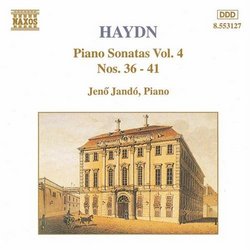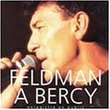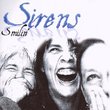| All Artists: Franz Joseph Haydn, Jenö Jandó Title: Haydn: Piano Sonatas, Vol. 4 Members Wishing: 0 Total Copies: 0 Label: Naxos Original Release Date: 1/1/1995 Re-Release Date: 12/13/1994 Genre: Classical Styles: Forms & Genres, Sonatas, Historical Periods, Classical (c.1770-1830) Number of Discs: 1 SwapaCD Credits: 1 UPC: 730099412728 |
Search - Franz Joseph Haydn, Jenö Jandó :: Haydn: Piano Sonatas, Vol. 4
 | Franz Joseph Haydn, Jenö Jandó Haydn: Piano Sonatas, Vol. 4 Genre: Classical
|
Larger Image |
CD DetailsSimilar CDs
|
CD ReviewsExploring the Haydn Sonatas -- Nos. 36 -- 41 Robin Friedman | Washington, D.C. United States | 08/20/2009 (5 out of 5 stars) "In 1774, Haydn made his first authorized publication outside Esterhazy with these six piano sonatas he wrote the previous year -- at about the same time as the composition of the "Farewell" symphony. The sonatas were dedicated to Prince Esterhazy, Haydn's employer. and were intended to be accessible to amateur performers and listeners. Today, the six sonatas are rarely performed as a group even though they are described in the Oxford Composer Companion to Haydn edited by David Wyn Jones is containing "some of Haydn's very best keyboard music." Fortunately, Jeno Jando has recorded these sonatas on a single CD as part of his much-praised recording of the complete Haydn piano sonatas on Naxos. The sonatas are available on a single CD or as part of a recently-issued compilation of Jando's Haydn cycle on Naxos. I have been enjoying hearing and reviewing Jando's Haydn in celebration of the 200th anniversary of the composer's death (1732 -- 1809).
These six sonatas are first and foremost enjoyable and entertaining. All of the sonatas are in the major key and five of them are in three movements. But each has its own character. The works sparkle with melody, strong syncopated rhythms, tocatta-like note figurations, long runs, humor, and surprises. Jando does not over-sentimentalize or overdo these compositions. Rather, he lets Haydn speak for himself -- accompanied by Jando's own frequent humming. The first sonata of the set, no. 36 in C major, opens with a bright cheerful theme with a good deal of lilt. Here as elsewhere Haydn takes a single short theme and makes it the basis for an extensive movement. The following adagio begins with rolled chords, characteristic of much of Haydn's piano writings, followed by a flowing, operatic theme featuring some lovely passages in descending thirds. The concluding presto is based upon a two-note phrase and reaches a dramatic pause on a large chord near the end before it concludes quietly with trills and filligree. The opening of the sonata no 37 in E major also features rolled chords. It includes two, rather than one, main themes, together with some contrasting passages in the development section in the minor key. The andante is in a gentle, light e-minor with a quiet flowing theme consisting of triplets. The work concludes with an unusual minuet in which both the theme and the minor-key trio are repeated and varied. The most famous of this group of sonatas is the third of the set, no. 38 in F major. I have heard other fine recordings of this piece by Mark-Andre Hamelin and by Emmanuel Ax. The opening movement is varied and highly rhythmical. It begins simply enough but soon takes a dynamic character with repeated, showy tocatta passages and large accompaniments in octaves. The second movement, the highlight of the sonata, is a beautiful highly embroidered sicillienne in 6/8 time with a lovely poignant theme and unusual, sharp harmonies. The finale is vigorous and virtuosic before it comes to a quiet close. The sonata no 39 in D major also is sometimes played on individual recordings of Haydn's sonatas. It has a brilliant, rapid-fire opening movement which contrasts with sections in counterpoint. The second and third movements follow each other without pause. The second movement begins in a simple d-minor but it soon expands and broadens to assume a singing flowing character, replete with embellishments. The finale is lively, syncopated, and humorous with a surprise appearance of a big chord towards the end. The short (less than eight minutes) E-flat major sonata, no. 40 consists of only two movements. It is moderately paced, but it includes strong rhythms, long intricate passagework, and some clangorous chords. The second movement is a brief minuet in canon, in which the two hands imitate each other and then switch their roles in mid-movement. The final work of the collection, the sonata no 41 in A major, Hob.26, is in three movements but also short. The opening movement dominates the work with its stacatto passages and varied rhythms. The short second movement is a "minuet in reverse" in which the second phrase of the opening theme is the same as the first phrase, but played exactly backwards. (This is similar to reading from left to right and then reading the same passage right to left.) The trio is also played "in reverse." The work and the set of sonatas ends with a short rapidly moving finale. A review published in 1778 shortly after this set of sonatas appeared described them as "very agreeable and entertaining with a pleasant humor and an amusing wit." These works retain their power to delight. Robin Friedman" |

 Track Listings (17) - Disc #1
Track Listings (17) - Disc #1


